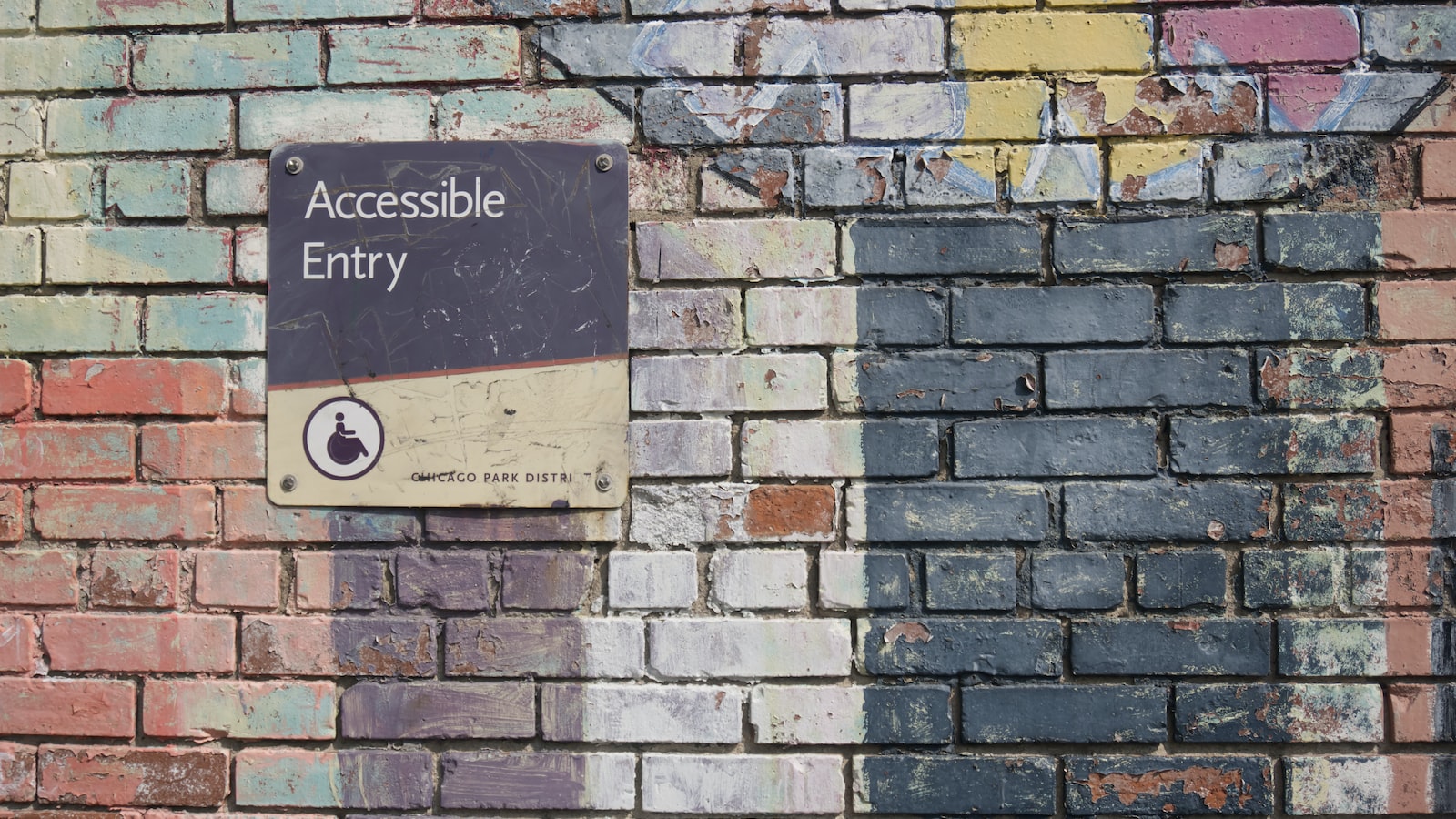Canada, the land of maple leaves and breathtaking landscapes, is not only a haven for nature enthusiasts but also a hub for thriving web design industry. In this digital age, where websites are the gateways to businesses and creativity knows no bounds, Canada’s web design scene has emerged as a vibrant and innovative force to reckon with. From the bustling streets of Toronto to the charming coastal cities of Vancouver, Canadian web designers are harnessing their skills, blending technology with aesthetics, and crafting online experiences that captivate and inspire. So, grab your virtual compass as we embark on an adventurous journey, delving into the intricate world of web design in the Great White North.

Web Design Trends in Canada: Uncovering the Latest Innovations and Stylish Techniques
The Canadian web design scene is constantly evolving, pushing boundaries and embracing new trends that elevate the online experience. From Vancouver to Toronto, innovative web designers are leveraging the latest technologies and techniques to create visually stunning websites that seamlessly blend style with functionality.
- Minimalism with a twist: Canadian web designers are embracing the minimalistic approach, but with a unique twist. Clean, crisp lines and generous use of white space remain at the core, but imaginative pops of color, bold typography, and asymmetrical layouts engage visitors and create a lasting impact.
- Microinteractions that delight: Websites in Canada are capitalizing on microinteractions to engage users and enhance the overall user experience. Delightful animations, hover effects, and interactive elements make the browsing journey more enjoyable and memorable, encouraging visitors to explore further and interact with the website.
As website design in Canada continues to evolve, it’s crucial for businesses and designers alike to stay updated with the latest trends. Embracing these innovative techniques and stylish aesthetics can help websites stand out in a competitive digital landscape, leaving a lasting impression on visitors and driving success.

User Experience: Crafting Engaging Websites for Seamless Interaction and Customer Satisfaction
When it comes to user experience, the key lies in crafting websites that not only captivate visitors but also provide them with seamless interaction and ultimate satisfaction. In the digital realm, where competition is fierce, a well-designed website holds the power to engage users, build trust, and convert them into loyal customers. It’s no secret that first impressions matter, and a visually appealing website is a great starting point for creating a positive user experience.
Here are some essential elements to consider:
- Intuitive Navigation: Users should easily find what they’re looking for, ensuring a hassle-free browsing experience.
- Responsive Design: With the increasing use of mobile devices, a responsive website adapts seamlessly to different screen sizes, ensuring users can access your content on any device.
- Fast Loading Speed: Slow loading times are a major turnoff for users. Optimizing the website’s performance is crucial for a great user experience.
Creating engaging websites that foster seamless interaction and customer satisfaction also involves a deep understanding of your target audience. Putting yourself in their shoes and anticipating their needs allows you to tailor your website’s content and design to their preferences. By integrating interactive elements, such as videos, quizzes, or product demonstrations, users are encouraged to actively engage with your brand. Additionally, integrating social media features and calls-to-action strategically can foster a sense of community and encourage users to share their experience with others.

Mobile Responsiveness: Optimizing Websites for Canadian Users on the Go
Nowadays, with the increasing number of Canadians relying on their mobile devices for browsing the web, it is crucial for businesses to optimize their websites for mobile responsiveness to cater to users on the go. Mobile responsiveness goes beyond simply having a mobile version of your website; it is about creating a seamless browsing experience that adapts to different screen sizes and resolutions, ensuring that your website looks and functions flawlessly on a variety of mobile devices.
To successfully optimize your website for Canadian users on the go, there are several key considerations to keep in mind. Firstly, prioritize a clean and clutter-free design that facilitates easy navigation, aiming for a user-friendly experience across all devices. Utilize responsive HTML and CSS frameworks to ensure that your website automatically adjusts its layout and content to fit various screen sizes, whether it’s a smartphone, tablet, or desktop computer. Additionally, incorporating intuitive touch-friendly features, such as large tap targets and streamlined forms, can greatly enhance the overall browsing experience, increasing user engagement and satisfaction.

Color Psychology: Utilizing the Power of Hues to Elicit Emotional Responses on Canadian Websites
When it comes to website design, color psychology plays a crucial role in creating a visually appealing and emotionally engaging user experience. Colors have the ability to evoke specific emotions and influence the behavior of website visitors. Canadian websites, in particular, can leverage the power of hues to create a connection with their audience and enhance the overall user journey.
By carefully selecting and utilizing different colors, Canadian websites can convey their brand messaging, create a sense of trust, and encourage desired actions. Here are a few key points demonstrating how hues can elicit emotional responses on Canadian websites:
-
The Vibrant Red: Red is a warm color that symbolizes passion, energy, and urgency. Including touches of red in call-to-action buttons can effectively grab users’ attention and compel them to take action, such as making a purchase or signing up for a newsletter.
- The Tranquil Blue: Blue, often associated with trust, reliability, and serenity, can be used to instill a sense of calmness and stability. Incorporating shades of blue in website designs can make Canadian users feel comfortable, safe, and confident in their dealings with the website, whether it’s for online shopping or seeking information.
By understanding the psychology behind colors and how they impact emotions, Canadian websites have the opportunity to masterfully utilize hues to create distinct visual identities, establish strong connections with their target audience, and ultimately enhance the overall user experience on their websites.

Accessibility Standards: Ensuring Inclusivity and Compliance in Canadian Web Design
Creating a website that is accessible to all users is not only essential for inclusivity but also a legal requirement in Canada. By implementing proper accessibility standards, businesses and organizations can ensure that their websites are usable by individuals with disabilities, such as visual impairments, hearing impairments, or mobility limitations. These standards go beyond simply enhancing the user experience; they are designed to provide equal access to information and services for everyone.
There are several key factors to consider when aiming for inclusivity and compliance in Canadian web design:
- Accessible Design: Utilize elements like high contrast colors, clear fonts, and proper heading structure to enhance readability for individuals with visual impairments.
- Alt Text: Provide descriptive alternative text for images and graphics, enabling screen reader users to understand the content they represent.
- Keyboard Navigation: Ensure that all functions and elements of the website can be accessed and activated using only a keyboard, as many users rely solely on keyboard navigation due to mobility impairments.
- Captions and Transcripts: Include captions for videos and provide transcripts for audio content, allowing individuals with hearing impairments to fully engage with multimedia content.
- Focus Indicators: Clearly indicate the active element on a webpage to assist those who rely on keyboard navigation or other assistive technologies.
- Responsive Design: Design websites that adapt to different screen sizes and devices, ensuring optimal user experience for individuals using assistive technologies or mobile devices.
By adhering to these accessibility standards, Canadian web designers not only demonstrate their commitment to inclusivity but also ensure compliance with legal requirements outlined in the Accessibility for Ontarians with Disabilities Act (AODA) and the Canadian Human Rights Act. Furthermore, embracing accessibility in web design goes beyond mere compliance; it creates a digital environment that welcomes and accommodates all users, making the internet a more inclusive space for everyone.
In Retrospect
In a digital landscape bustling with limitless possibilities, web design in Canada emerges as an artistic force, blending ingenuity with functionality. From the stunning visuals that adorn each website to the seamless user experience they offer, Canadian web designers enchant visitors on a virtual journey like no other. Captivating the essence of this vast land’s diverse beauty, web design in Canada encapsulates the country’s vibrant culture, dynamic history, and forward-thinking spirit.
With every click, we are transported to breathtaking coastlines, where the tranquility of the Atlantic Ocean harmonizes with the rugged charm of the Pacific. Rich tapestries of colors and harmonious typography weave together, showcasing the melting pot of cultures found in the bustling urban centers of Toronto and Vancouver. The warmth of the maple leaves, gently dancing in the wind, is breathed to life by the intricate animations adorning each page.
In the realm of web design, Canada excels in striking the delicate balance between functionality and aesthetics. With an unwavering commitment to user experience, Canadian designers sculpt intuitive interfaces that guide visitors effortlessly through digital landscapes. From intuitive navigation menus to responsive layouts, every element is meticulously crafted to ensure seamless interaction, enabling users to explore without hesitation.
However, it is the Canadian spirit of innovation that truly sets web design in Canada apart. Pioneering the latest design trends and technologies, Canadian designers fearlessly push the boundaries of creativity, evolving at the forefront of the digital revolution. Through their visionary approach, they reimagine the digital realm, infusing it with captivating visuals and pioneering functionalities. From parallax scrolling that transports users into a multidimensional experience to cutting-edge interactions that leave lasting impressions, Canadian web design is a testament to the power of imagination.
As the landscape of the World Wide Web continues to evolve, one thing remains certain—Canadian web design will continue to captivate and inspire, weaving together innovation and artistry in a harmonious symphony of digital brilliance. Whether it’s the creation of user-centric experiences or the mastery of cutting-edge design techniques, web design in Canada stands at the vanguard of this ever-changing virtual realm. So embrace the possibilities, embark on a digital adventure, and immerse yourself in the enchanting world of Canadian web design—where technology converges with creativity, leaving a lasting imprint on the digital canvas of tomorrow.
Web design has become a very important aspect of how individuals, businesses and organizations represent themselves in the digital landscape. Canada is a country that is known for pushing the envelope when it comes to the world of digital content, and web design in Canada is no exception.
It is well established that Canadian web designers are on the cutting edge when it comes to creating content that is fit for the current market. Whether it’s an established business or an entrepreneurial organization looking to build an online presence, web design in Canada consistently strives for excellence.
In order to create web designs that are effective, web designers in Canada utilize a variety of tools and techniques. One such tool is user experience (UX) design, which uses data and feedback from users to create a website or application that is both user friendly and visually appealing. Moreover, Canadian web designers employ storytelling techniques in order to capture users’ attention and inspire them to interact with the website. Additionally, coding knowledge and understanding of analytics enable web designers in Canada to create precise and effective web designs.
In addition to these technical skills, Canadian-based web designers are encouraged to stay informed on the latest advancements in digital media and the web design industry. This allows them to craft web designs that stand out from the vast crowd.
As the demand for digital content continues to rise, Canadian web designers have the opportunity to contribute to the current digital landscape by creating web designs that are reflective of Canada’s unique culture and identity. With its innovative approach to web design, Canada is continuing to shape the future of the digital world.






Have you tried any of the local providers?
Nice post! #WebDesign